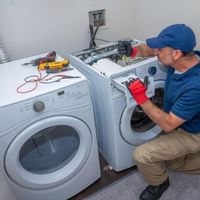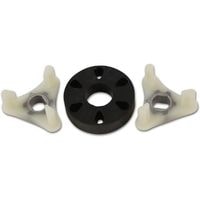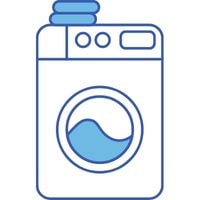Washer won’t agitate or spin. Your washing machine has several components in play and they have to be working properly for the device to operate as it should.
If you notice that your washing machine refuses to agitate or spins during a wash cycle, try troubleshooting before calling a service technician.
It could be as simple as removing buildup inside of your machine or as severe as replacing a damaged part. Of course, it’s possible to avoid one altogether with regular washer maintenance which is why we want you to know how to do it.
Washer won’t agitate or spin
My washer won’t spin or agitate. Inspect the drive belt to determine if it is broken or if it is too loose on the pulleys. If the drive belt is broken or too loose, replace it.
If there’s an overload, the motor coupling will separate and release the tension on both the motor and transmission in order to protect both from damage due to stress.
Defective Drive Motor
The drive motor is at fault most of the time. However, it’s rarely to blame for this particular problem.
Before replacing the drive motor, always check to make sure that other components are working properly first.
If you have ruled those parts out and need to assume that the motor isn’t the real problem then a replacement might be in order. First, make sure that power is reaching the motor if not, it needs replacing as soon as possible.
To find out whether or not your motor is defective start by checking that it has a smooth-running action and rotates freely without excessive noise and sounds like normal during operation if not, then it’s almost certainly damaged beyond repair.
Faulty Motor Coupling
The motor coupling connects the motor to the washer transmission. The load limit of the motor coupling is directly related to both the weight of the laundry and your washer’s capacity.
Make sure you do not overload your washer, as doing so can damage both your motor and transmission.
Be aware that although replacing a worn-out part like a broken motor coupling might seem like an even better solution compared to fixing your entire washing machine, replacing a single part like that won’t necessarily solve all of your problems.
Your machine could still be wearing out as a whole because of all the time and stress that it has accumulated throughout its operational lifespan (many years by today’s standards) especially if you don’t take proper care of it.
Broken Drive Belt
Inspect the drive belt to determine if it is loose or broken. If the drive belt is loose or broken, it needs to be replaced.
Lid Switch Assembly issue
The lid switch assembly prevents the washing machine from spinning when the lid is open. If this switch fails, the washing machine will not spin.
To determine if this switch is defective, use a multimeter to test for continuity from one pole of the switch to the ground.
On some models, you’ll need to remove the control panel and interrupt power with a jumper wire in order to get access to this switch.
The alternative way is by unplugging the washer, then opening up the back panel and jumping (ing) connections on both sides of this switch. If it does not have continuity replace it.
Transmission might be worn out
The washer transmission might be worn out or defective. Transmissions have gears in them that can wear out and become useless, preventing the transmission to spin and agitate.
However, this is almost never the case. Before replacing the transmission, first, check all of the other components on my website in this troubleshooting guide linked below.
If none of these components are causing your washer to not function properly, you then know it is most likely a problem with the transmission which should be replaced as soon as possible.
Motor Control Board not working
The motor control board provides power to a motor that controls the action of other components. If the motor control board doesn’t supply adequate power, this may make the washer malfunction or fail to operate entirely.
The first step is to check for defects in the circuitry on or around the board itself by testing for burned-out connections and replacing what’s faulty.
To test whether the motor control board itself is functioning improperly, you can try measuring its output (the flow of energy) against its resting voltage level using a multi-meter.
In order to proceed with replacement, make sure that it is putting out sufficient current to activate its connected piece of hardware before moving onward with disassembly.
The washer door is not latched shut
The door latch is a part of the washer that doesn’t always get much attention or talk around the office. However, without it, your washer door cannot close and secure itself during the washing cycle.
Without its presence, your product would be unable to start up or wash any garments. If your door latch is damaged or broken in some way, you’ll need to replace it so your product can function again.
You should always check if your door latch has electrical switches on it. Sometimes they get faulty and when this happens, you’ll need to consider replacing those as well because that’s another thing that must be working for the entire washer unit to work properly.
If a switch malfunctions, the whole mechanism stops functioning and therefore must be replaced before further use.
Rotor Assembly problem
The rotor interacts with the stator to make a strong electromagnetic field, which rotates the tub in either direction.
If any part of the rotor is damaged, or if the magnets on the rotor are defective, then there will be a problem with your washer and it may not spin or agitate.
To determine if the rotor is what needs replacing you will have to inspect it thoroughly. If any part of the rotor has been damaged or is broken it should be replaced as soon as possible.
Washer won’t agitate or spin
Related Guides
